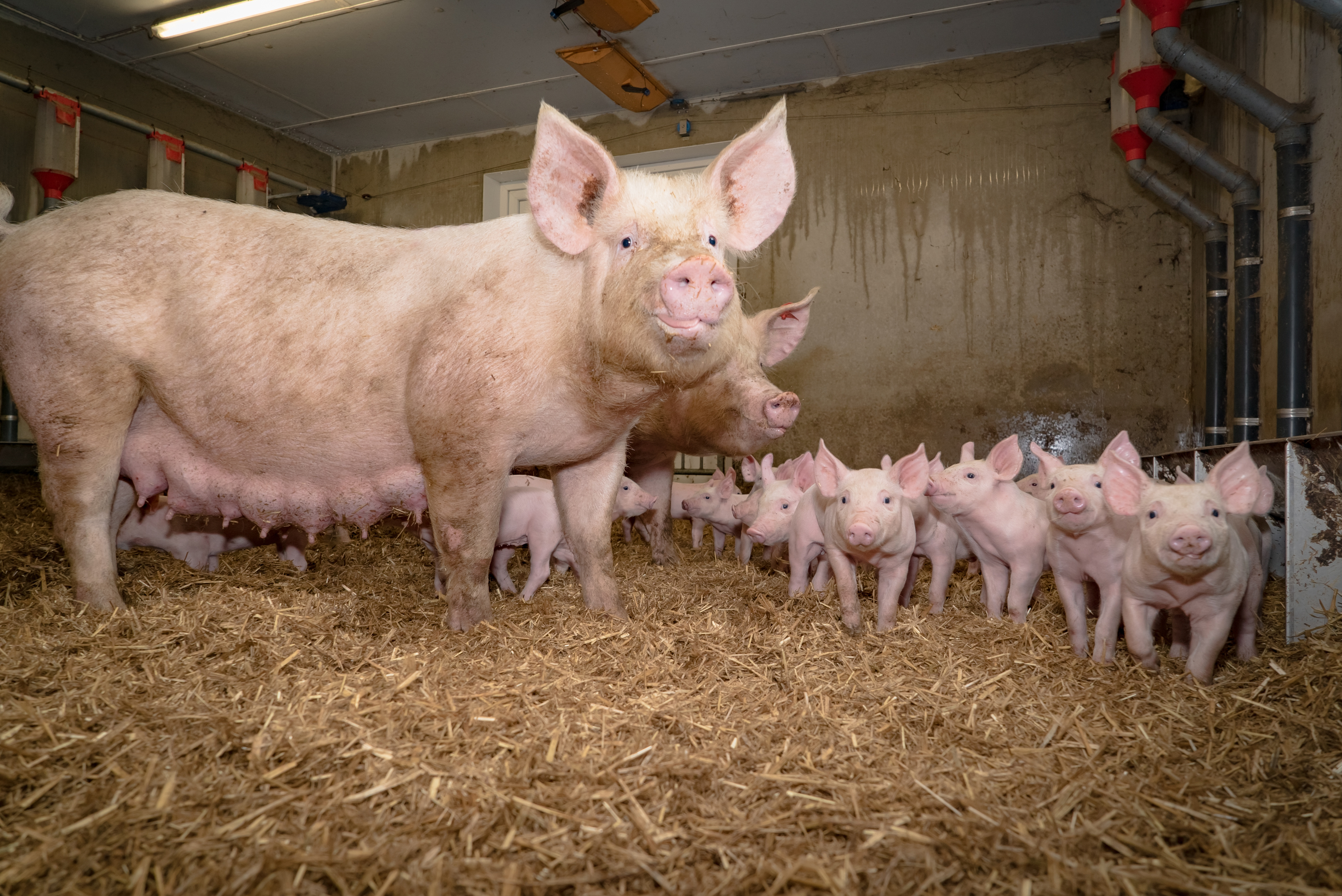



Introduction to group lactation pens reduces harmful behaviour in piglets
New research shows that mixing sows and their litters into group lactation pens after seven days encourages expression of motivated behaviours and reduces harmful manipulative behaviours in piglets.The study, published in Applied Animal Behaviour Science and Animal, aimed to test the hypothesis that the behaviour of sows and piglets is improved when mixed into group lactation at seven rather than 14 days postpartum, and in group lactation compared to farrowing crates, as indicated by sow-piglet interactions, social behaviour and activity.
The study builds on research investigating the natural behaviour of sows and piglets that, under natural conditions, leave the nest between seven and 14 days postpartum and re-join the herd to nurse piglets communally.
Methodology
Treatments
- A total of 112 multiparous sows and their litters were allocated to three lactation housing treatments over four time replicates.
- All sows were farrowed in standard farrowing crates.
- Group lactation treatment (GL) sows were transferred into group pens at seven or 14 days postpartum.
- Farrowing crate treatment (FC) sows and their litters remained within farrowing crates in single litters until weaning.
Observation
- In each replicate, two focal sows per GL pen (one high and one low parity) were video recorded for one hour post-mixing.
- The GL focal sows, along with four FC sows (two high and two low parity) and two focal piglets per focal sow (one average sized male and one average sized female), were also recorded from 07:00 to 17:00 on the day after mixing and two days before weaning.
- Data gathered continuously from video records included sow aggressive and nursing behaviours while sow and piglet time-budgets (time spent interacting) were observed using point sampling at five-minute intervals.
Results and conclusions
Inter-sow aggression
- There was no significant difference in the frequency of aggressive bouts, the frequency of fights, the total time fighting or the average fight length in the one hour following mixing, at two days post-mixing and the day prior to weaning.
- The frequency of aggressive bouts was higher pre-weaning than at day two in GL sows.
Nursing behaviour
- There were no successful nursing bouts in the one hour period post-mixing.
- There was no difference between GL treatments in the frequency of unsuccessful nursing bouts in this one-hour period.
- There was no effect of housing (FC or GL) on nursing frequency.
- GL sows has significantly fewer nursing bouts, spent significantly less total time nursing successfully, terminated significantly more nursing bouts and had a significantly higher inter-nursing interval compared to FC sows.
- Nursing behaviour remained severely disrupted after 24 hours after grouping for a small proportion of group lactation sows.
- FC sows had longer successful nursing bouts than GL sows pre-weaning, but there was no difference at day two.
- FC7 sows took significantly longer to letdown than GL7 sows, but the same difference was not evident between the GL14 and FC14 sows.
- The average duration of unsuccessful nursing bouts were significantly longer for FC than GL sows at day two, but pre-weaning FC sows had shorter unsuccessful nursing bouts and spent significantly less total time nursing unsuccessfully.
Sow behavioural time budgets
- FC sows spent significantly more time lying and less time walking or standing compared to GL sows.
- FC sows spent less time investigating the pen and interacting with piglets compared to GL sows.
- There were no effects of housing on the time sows spent sitting, nursing or investigating food.
- GL14 sows spent significantly more time nosing other sows than GL7 sows but aggressive behaviour (recorded as a time budget) did not significantly differ between the two GL treatments.
Piglet behavioural time budgets
- Piglets in group lactation pens spent significantly less time lying and significantly more time walking, standing or sitting outside of the creep than those in farrowing crates.
- While there were no effects of housing at day two for any of the following variables, at pre-weaning GL piglets spent more time in the creep and investigating the pen, and less time manipulating other piglets, than FC piglets.
- At day 2, FC14 piglets spent significantly more time investigating food than FC7, GL7 or GL14 piglets, but at pre-weaning FC7 piglets spent the most time investigating food.
- Lactation housing had no significant effect on the time piglets spent suckling, interacting with the sow, nosing other piglets, playing or delivering aggression.
- The time GL7 and GL14 piglets spent suckling and nosing sows other than their dam significantly increased from day two to pre-weaning.

Conclusions
Mixing sows and their litters into group lactation pens after an initial period of seven or 14 days induced behavioural changes in sows and piglets compared to housing them in farrowing crates during lactation.
Few differences on behaviour were observed between re-grouping at seven versus 14 days postpartum.
Group lactation supports the expression of some highly motivated behaviours, such as maternal interactions in sows and exploratory behaviour in piglets, with a reduction in harmful manipulative behaviour in piglets.
This said, the behavioural benefits of group lactation pens come at the cost of disrupting nursing behaviour.
| References | ||||
|---|---|---|---|---|
| Verdon, M., Morrison, R.S. and Rault, J.L. | ||||
| (2019) | Sow and piglet behaviour in group lactation housing from 7 or 14 days post-partum. Applied Animal Behaviour Science. |








